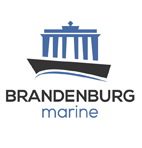Loss Prevention Advice
- Details
- News /
One incident of armed robbery against ships in Asia were reported between 20 and 26 August 2024.
The incident occurred onboard a barge while underway in the westbound lane of the Traffic Separation Scheme (TSS) of the Singapore Straits (SS) on 23 August 2024. Details of the incident are shown below:
- Details
- News /
An unexpected incident occurred on board a bulk carrier nearing the completion of loading corn cargo, causing two fumigation contractors to asphyxiate and resulting in the death of one contractor. Before the incident, the cargo holds had been closed for six days, leading to depleted oxygen levels inside.
- Details
- News /
A Greek-owned and flagged oil tanker is ablaze and adrift in the Red Sea following a series of attacks, according to British and Greek authorities.
The Sounion was initially targeted by gunfire from two small boats that approached it early on Wednesday, approximately 77 nautical miles (143 km) west of Yemen’s port of Hudaydah, according to the UK Maritime Trade Operations (UKMTO) office.
- Details
- News /
Below you will find ARC’s weekly report dated 21 August 2024, covering the period of 15 to 21 August 2024, where the following incidents were reported:
- 0 maritime security incidents in West Africa in the last 7 days
- 3 maritime security incidents in the Indian Ocean/Middle East in the last 7 days.
Full report at the following link.
https://britanniapandi.com/wp-content/uploads/2024/08/ARC-Weekly-Report-21.08.24.pdf



